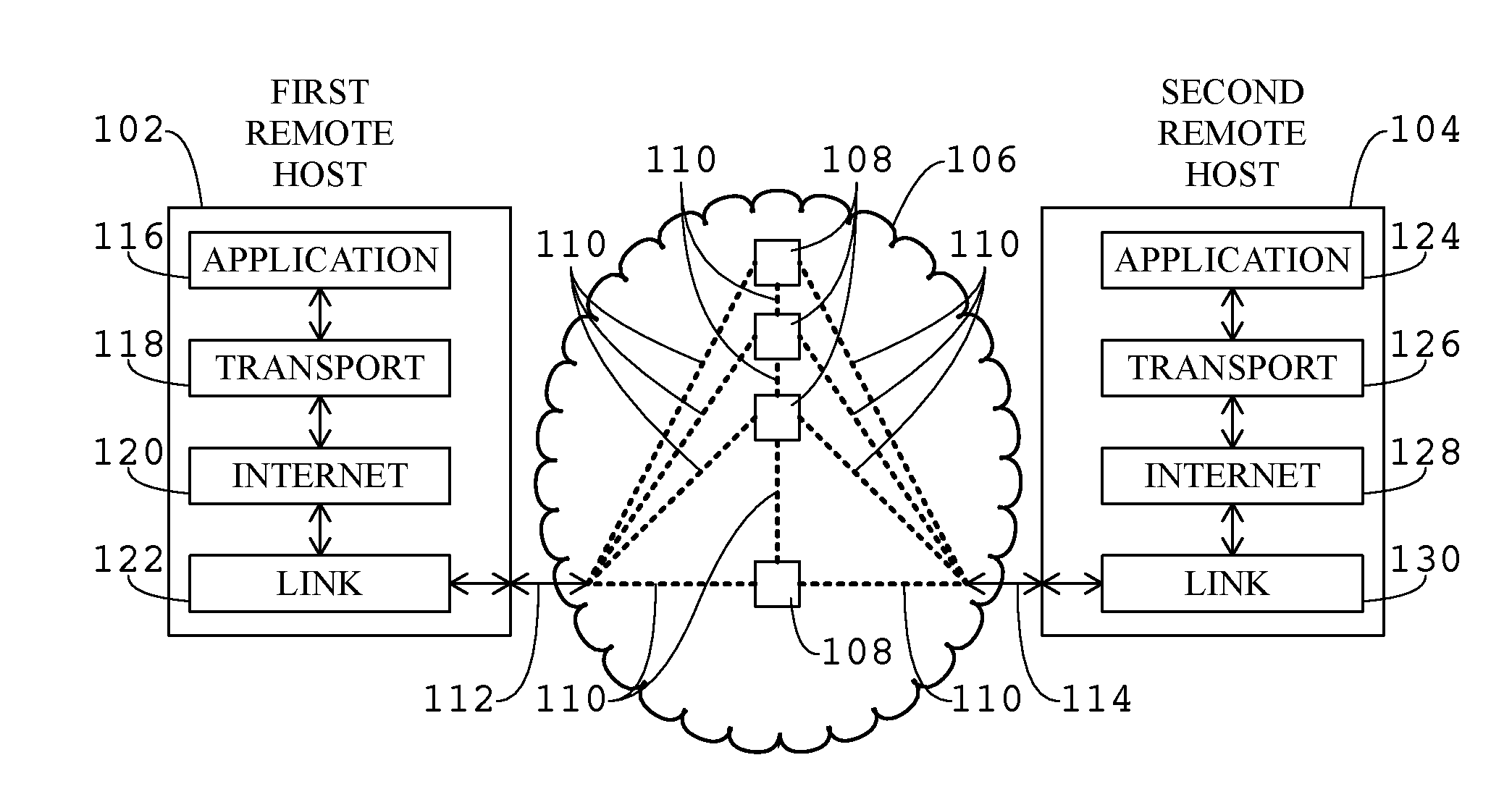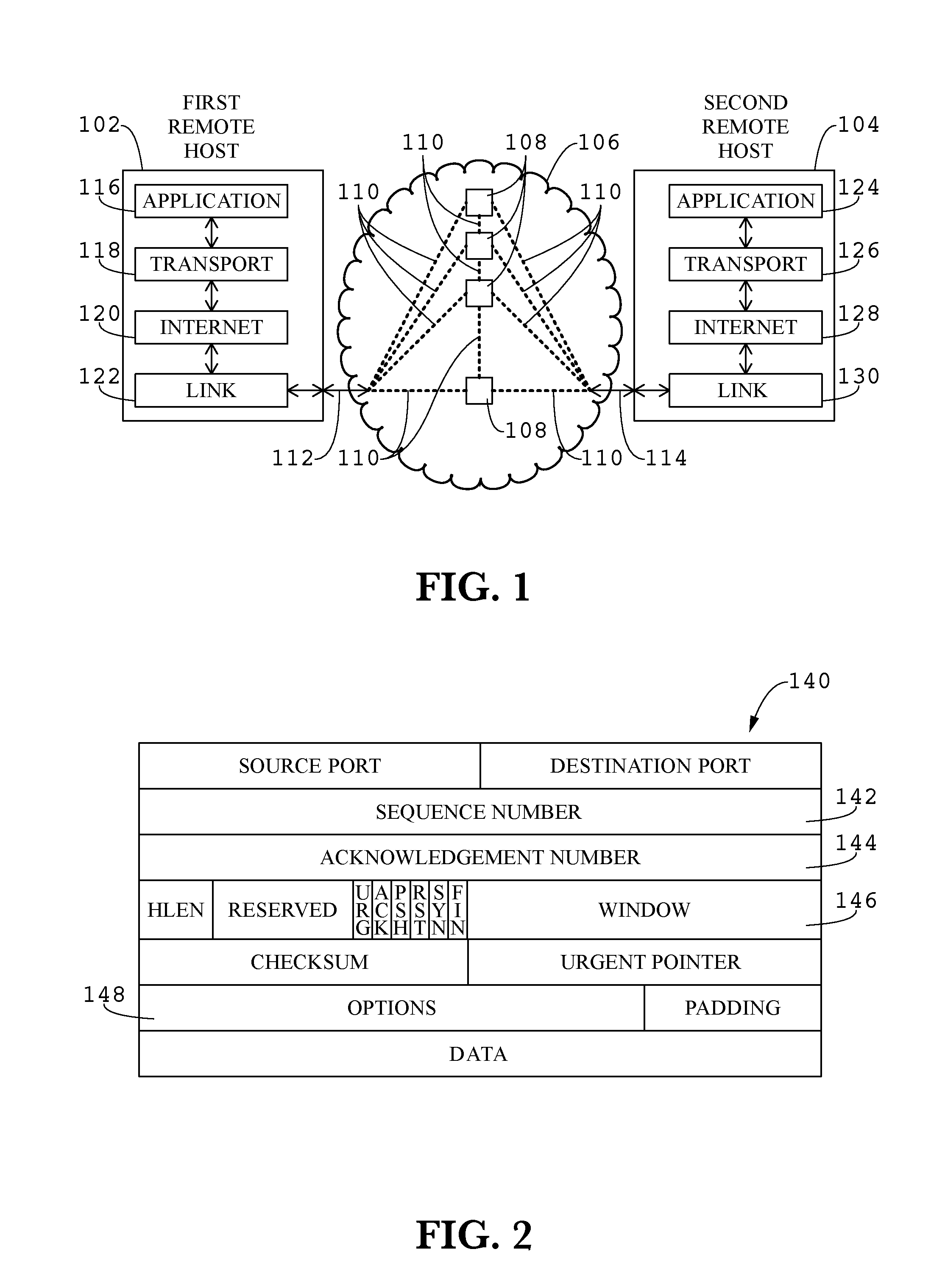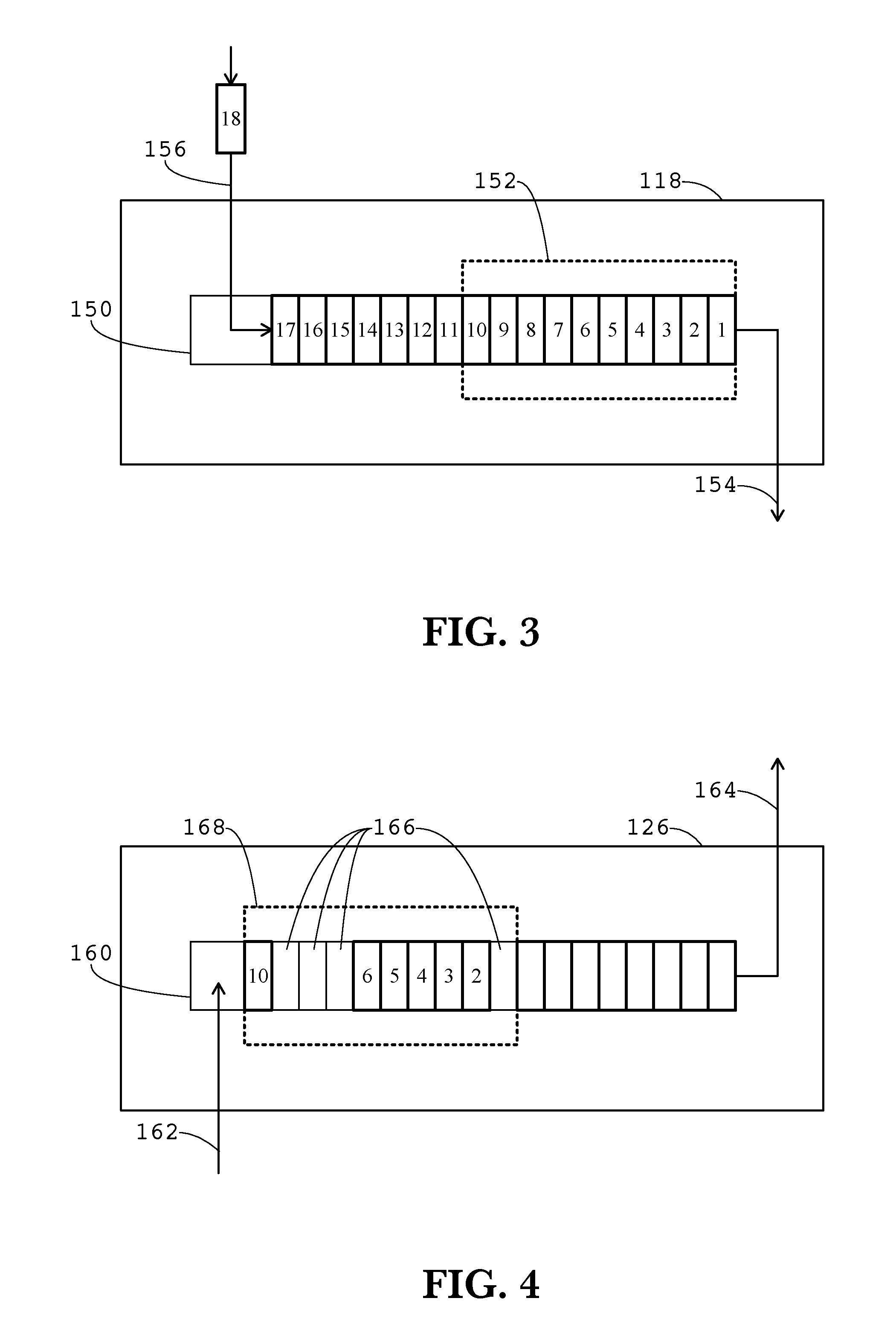ENHANCED LARGE DATA TRANSMISSIONS AND CATASTROPHIC CONGESTION AVOIDANCE OVER IPv6 TCP/IP NETWORKS
a technology of ipv6 and tcp/ip networks, applied in the field of network communication, can solve the problems of system no longer operating efficiently, cpu and network capacity consumption increasing, and ip (and other similar internet layer protocols) software is not designed for reliability, so as to improve the process, eliminate the failure of catastrophic network congestion, and improve the effect of the process
- Summary
- Abstract
- Description
- Claims
- Application Information
AI Technical Summary
Benefits of technology
Problems solved by technology
Method used
Image
Examples
Embodiment Construction
[0042]Exemplary embodiments of the invention are directed to a system for and method of handling packet loss during data transmission between two remote hosts that avoids network congestion escalation without unnecessarily decreasing the rate of data transfer, thereby increasing the overall speed and efficiency of the data transmission during a connection. An exemplary embodiment of the invention is preferably implemented within the transport layer of networked hosts. FIG. 1 depicts a typical configuration of first 102 and second 104 remote hosts in communication with one another via a packet switched network 106 made up of one or more network devices 108. Those skilled in the art will appreciate that the physical makeup, routing protocols and the like may take on a variety of forms and combinations without departing from the scope of the invention disclosed herein, and that any particular network components described herein should not be seen as limiting, but rather are provided fo...
PUM
 Login to View More
Login to View More Abstract
Description
Claims
Application Information
 Login to View More
Login to View More - R&D
- Intellectual Property
- Life Sciences
- Materials
- Tech Scout
- Unparalleled Data Quality
- Higher Quality Content
- 60% Fewer Hallucinations
Browse by: Latest US Patents, China's latest patents, Technical Efficacy Thesaurus, Application Domain, Technology Topic, Popular Technical Reports.
© 2025 PatSnap. All rights reserved.Legal|Privacy policy|Modern Slavery Act Transparency Statement|Sitemap|About US| Contact US: help@patsnap.com



